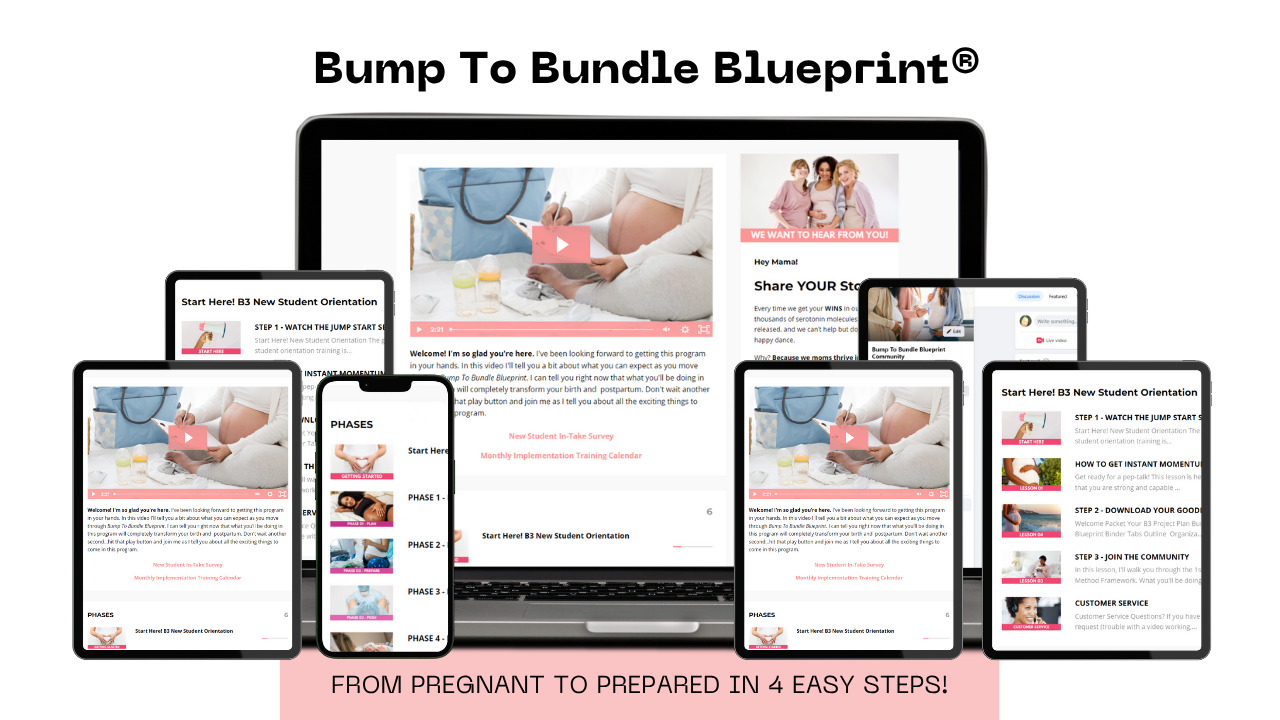🍼 Breastfeeding for the First Time? What Every Pregnant Mom Needs to Know Before Baby Arrives

If you’re pregnant and thinking, “I want to breastfeed, but I have literally NO idea where to start…”—you’re not alone.
Most first-time moms feel unsure (or overwhelmed) when it comes to breastfeeding. And while it’s something your body is designed to do, the truth is—it doesn’t always come naturally.
But guess what?
With the right guidance and prep (yes, even before baby arrives), you can feel way more confident, calm, and ready. Let’s dive into what you really need to know before baby latches for the first time.
🤯 The Biggest Breastfeeding Myth That Sets New Moms Up to Fail
Let’s get this out of the way first:
❌ “Breastfeeding is natural, so it’ll just happen naturally.”
I hear this all the time—and it’s one of the biggest mindset traps out there.
Here’s the truth:
✔️ Breastfeeding is a learned skill—for both you and your baby.
Just like birth, walking, or talking—it takes time, practice, and support.
So if it doesn’t “click” on day one? You’re not failing. You’re just new. And that’s okay.
⏱️ What Actually Happens in the First 24 Hours After Birth
You’ve probably heard about the golden hour—that first hour after birth when baby goes skin-to-skin on your chest. It’s a magical window to try breastfeeding for the first time.
BUT... here’s what most people don’t tell you:
-
👶 Baby might not latch at all—they might bob their head, lick, or fall asleep
-
😴 You might feel overwhelmed, emotional, or just plain exhausted
-
👩🏽⚕️ Nurses may offer limited help, and things can move fast
✅ Pro Tip:
Ask for help with the first latch while you’re still in the hospital. Don’t wait until baby is screaming and you're trying to DIY your way through it.
🥛 Colostrum vs. Milk: What’s Normal in the First Week?
Here’s a quick rundown on how your milk supply works:
👉 Day 1:
Your body produces colostrum, a thick, yellowish liquid that’s PACKED with antibodies. It’s small in volume—just a few teaspoons—but it’s exactly what your baby needs. Their tummy is the size of a cherry!
👉 Days 2–5:
Your mature milk starts coming in. You might feel:
-
🔥 Warmth
-
🤕 Tenderness
-
🎈 Engorgement (like your boobs are suddenly boulders)
This is totally normal—but it can feel intense.
✅ Pro Tip:
Feed baby often (8–12 times in 24 hours) to establish supply and avoid clogged ducts.
And yes, cluster feeding at night is normal. It’s your baby’s way of telling your body to keep producing more milk.
👄 How to Get a Deep, Pain-Free Latch
A good latch = everything.
It’s what protects your nipples, boosts supply, and keeps baby fed and happy.
Here’s what to look for in a great latch:
✅ Baby’s mouth wide open
✅ Lips flanged out like fish lips
✅ More of your areola showing on top than bottom
✅ Baby’s chin pressed into your breast
✅ Pro Tip:
Bring baby to your breast, not the other way around. Use tummy-to-tummy positioning and support baby’s neck for a deeper, more comfortable latch.
If your toes are curling every time they latch? That’s a sign to get support ASAP.
🚩 Red Flags to Watch For
Some challenges are normal... but others need immediate support.
Here’s when to call your doula, midwife, or IBCLC:
-
🚩 Baby is feeding but not making enough wet/dirty diapers
-
🚩 You hear clicking sounds or see dimpling cheeks while feeding
-
🚩 You have cracked, bleeding, or scabbed nipples
-
🚩 Baby is super sleepy and not waking to feed
✅ Pro Tip:
Use the 3-day, 7-day, and 10-day rule to monitor milk transition, diaper output, and weight gain.
💡 What Helped Me the Most at 3AM
When I was crying on the couch at 3AM with sore nipples and a hungry baby, I realized something:
You are NOT supposed to figure this out alone.
Getting help isn’t weakness. It’s wisdom.
And the best time to get that help? Before baby arrives.
💛 Want Step-by-Step Breastfeeding Prep—Before Birth?
If you want a calm, confident start to breastfeeding, my Bump To Bundle Blueprint course is here for you.
Inside, you’ll learn:
✔️ How to get a deep latch
✔️ What to expect in the first week
✔️ How to troubleshoot common issues (like engorgement or oversupply)
✔️ PLUS: full labor + birth prep for pregnant moms
🎉 It’s everything I wish I had with my first—and it’s designed specifically for you.
👉 Grab your spot here → [Insert course link]
🎥 What to Watch Next
Still feeling a little unsure?
I’ve got binge-worthy playlists for you, mama:
Start there, and you’ll feel 1000x more ready when baby gets here. 💪🏾
You’ve got this, mama—and I’ve got you. 💛
Let me know in the comments:
What’s your biggest worry about breastfeeding right now?



